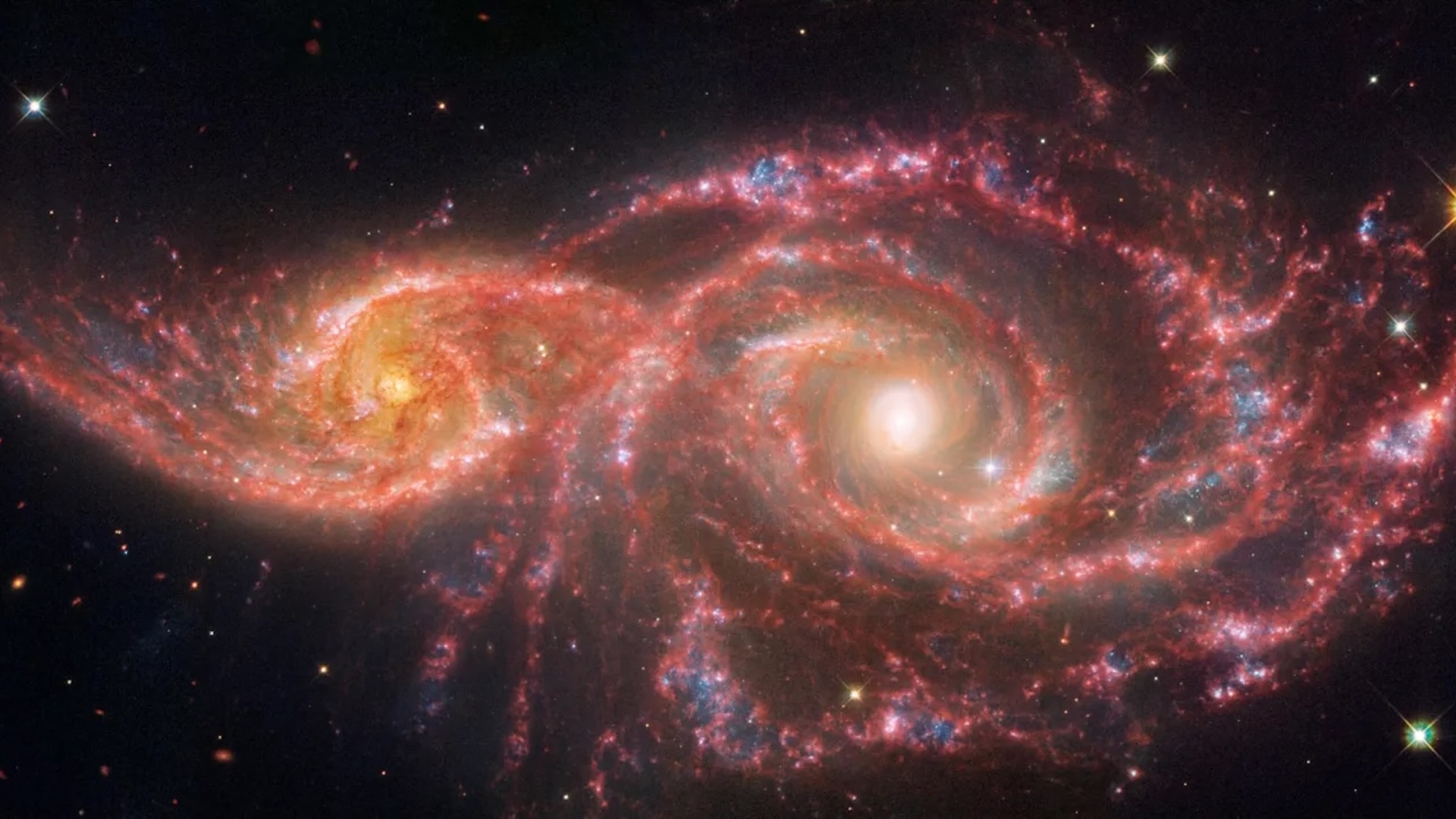Last year, Japan’s Hayabusa 2 asteroid explorer returned samples from the asteroid Ryugu, and now the first analysis of the rock shows it has a primitive composition and a curiously dark colour
By Alex Wilkins
Artist’s impression of Hayabusa 2 near Ryugu Akihiro Ikeshita
The asteroid Ryugu contains some of the darkest and oldest material in the known solar system, according to a pair of preliminary analyses of samples collected from the space rock.
The samples, only the second to be taken from an asteroid, were extracted by Japan’s Hayabusa 2 asteroid explorer in 2019 and returned to Earth last year.
Totalling about 5.4 grams of material and taken from Ryugu’s outer surface, the rock samples appear to have many minerals and compounds in common with meteorites found on Earth. But they also contain a raft of unusual compounds, such as organic and water-bearing molecules.
“Although most of these compounds are minor in terms of quantity – a few per cent at maximum – they have a high potential in tracing some of the processes that occurred in the earlier stages of the formation of the solar system and, later on, Ryugu’s parent body,” says Cédric Pilorget at the University of Paris-Saclay, France, a member of the international team of researchers who studied the samples and lead author of the first analysis.
In the second analysis, researchers led by a team at the Japan Aerospace Exploration Agency used several non-destructive techniques to examine the samples, including studying them using hyperspectral microscopes – which involves capturing hundreds of images of a sample under light at different wavelengths to extract information about the composition of the minerals it contains – and using optical spectrometry.
These analyses confirmed many of the observations made by Hayabusa 2’s remote sensors in 2019, when the samples were collected some 300 million kilometres from Earth.
In addition, the samples were found to be very dark in terms of the light they reflected – even darker than meteorites in collections, indicating either a unique chemical make-up, or that Earth’s atmosphere somehow brightens meteors as they descend.
The second analysis also revealed that Ryugu is highly porous, which could be a feature it gained during its formation from a series of collisions and break-ups of ancient asteroids.
The presence of water-bearing compounds and carbonates, meanwhile, indicates that Ryugu comes from the edge of the early solar system, while the presence of nitrogen-based compounds could help specify Ryugu’s origin further.
The absence of some compounds, including calcium and aluminium-based minerals, suggests Ryugu wasn’t formed in the very earliest, high temperature regime of the solar system, says Ashley King at the Mineral and Planetary Sciences Division of the Natural History Museum in London, who wasn’t involved in the research.
Although the preliminary analyses don’t specify an exact age for Ryugu, the presence of well-preserved, dark, carbon-based compounds implies that it has been around since close to the dawn of the solar system, almost 4.6 billion years ago, says King.
“They’re the most pristine materials that we can get hold of and they’re the things that take us back to time zero in the solar system,” he says.
Journal references: Nature, DOI: 10.1038/s41550-021-01550-6 and DOI: 10.1038/s41550-021-01549-z
Sign up to Lost in Space-Time, a free monthly newsletter on the weirdness of reality
More on these topics:
Note: This article have been indexed to our site. We do not claim legitimacy, ownership or copyright of any of the content above. To see the article at original source Click Here













